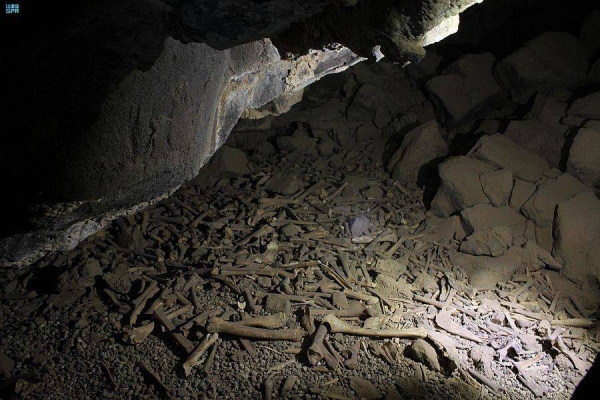
RIYADH — The Heritage Commission announced on Monday that Archaeologists and paleontologists from the commission in cooperation with the Saudi Geological Survey, King Saud University, and the German Max Planck Institute have made new discoveries in the Umm Jirsan cave, in the Harrat Khaybar lava field, soon to be published in the international journal, Archaeological and Anthropological Sciences.
The lava tube cave of Umm Jirsan has both archaeological and palaeontological deposits that have been radiocarbon dated to multiple periods over 7,000 years.
Especially striking is the rich number and exceptional preservation of tens of thousands of animal bones accumulated over time in the cave.
The bone accumulations were mainly composed of striped hyena, horse, the wild ass and the domesticated donkey, as well as wild and domesticated camel, ibex, goat, and cattle.
In addition to the animal bones, the skulls of humans were also found, likely stolen from nearby graves in prehistory.
The bones are presently being examined for DNA, and studies are now underway to examine the history of pastoralism and animal domestication in the Arabian Peninsula.
The discovery is part of a series of discoveries made by the Heritage Commission recently, confirming that the Arabian Peninsula was home to humans since thousands of years ago, besides the many domesticated and wild animals living and breeding in it throughout the years.
It comes in line with the commission’s efforts to excavate, preserve and promote Saudi antiquities and national heritage.